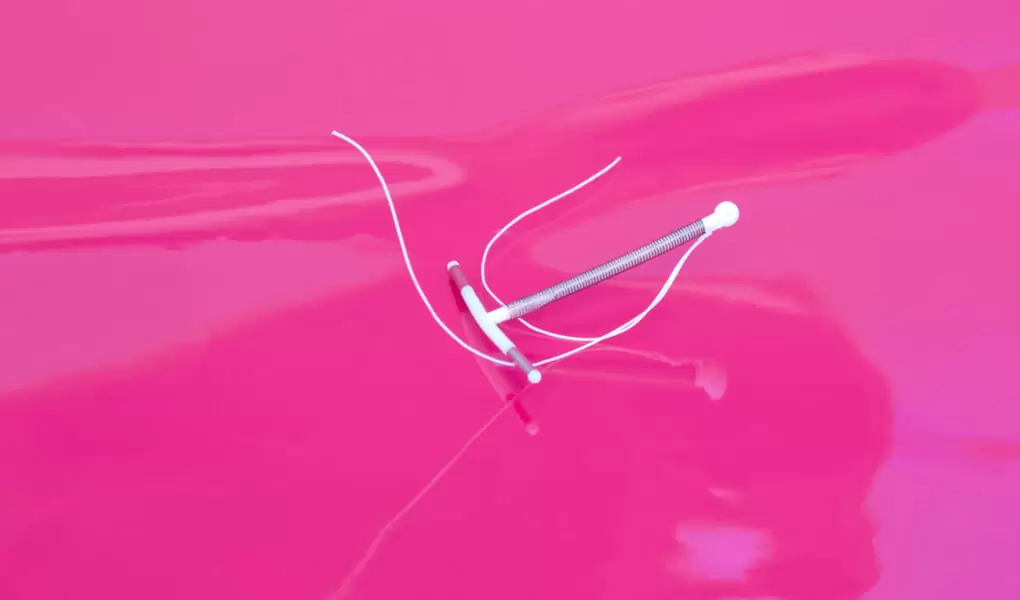Follow Us!
Patient stories, informative videos and much more on our social media accounts

The IUD, one of the birth control methods, is a T-shaped device that is placed inside the uterus. It can be prescribed by a doctor and easily inserted with a simple procedure, providing long-term protection against unwanted pregnancies. The IUD can be used by all women, whether they have regular or irregular periods, and it is quickly inserted by the doctor without the need for surgical intervention. After being easily inserted into the uterus via the vaginal route, the IUD prevents sperm from reaching the egg or the fertilized egg from attaching to the uterine wall, thus preventing unwanted pregnancies.
There are two types of IUDs: hormonal and non-hormonal, and they measure between 2 and 3 cm in size. Non-hormonal IUDs are also known as copper IUDs. IUDs, the most preferred birth control method among women worldwide, provide 99% protection without affecting sexual life. Depending on the type of IUD used, it provides birth control for 5 to 10 years. During regular gynecological examinations, the condition and position of the IUD are checked. Before answering the frequently asked question of how an IUD is inserted, it is important to understand what an IUD is.
What is an IUD?
An IUD, also known as an intrauterine device (IUD), is a T-shaped device measuring 2-3 cm with a string at the end, which can be quickly inserted into the uterus by a gynecologist through the vaginal route. It is commonly preferred by women who have previously given birth because of its long-lasting effects, its imperceptibility during sexual intercourse, and its reversibility when removed, allowing for the possibility of pregnancy after removal. The hormonal IUD, made of soft plastic material, slowly releases progesterone hormone into the body, reducing ovulation. It thickens the cervical mucus, making it more difficult for sperm to pass through. Even if fertilization occurs, it prevents the fertilized egg from attaching to the uterus. The hormonal IUD has a lifespan of 3 to 5 years, after which it is replaced with a new one.
Frequently asked questions about hormonal IUDs can be answered as follows: The copper IUD is also T-shaped, with copper covering all three arms. Once placed inside the uterus, the copper triggers an immune response in the uterus, creating an inhospitable environment for sperm. The copper ions interfere with sperm movement, preventing it from reaching the egg. The copper IUD starts providing protection immediately upon insertion, and its effect lasts up to 10 years. The contraceptive effect of hormonal IUDs begins approximately 7 days after insertion and prevents pregnancy for 3 to 5 years, depending on the brand. Both types of IUDs should be inserted by a specialist doctor and checked annually. Also, the string located at the bottom of both the copper and hormonal IUDs allows the user to manually check the position of the IUD. After insertion, the doctor shortens the string so it is not visible externally, ensuring the IUD’s presence is not detectable during sexual intercourse.
How is an IUD Inserted?
To get an IUD, the person lies down, just as in a routine gynecological examination. After sterilization, a tool called a speculum is used to open the vagina, and the cervix is held with a tenaculum. The prepared IUD is then pushed through the cervix into the uterus. The strings are shortened so that they are not visible from the outside. The procedure typically takes about 5 minutes, after which the person can resume their normal activities. After the insertion, some people may experience lower abdominal pain, cramps, and bleeding, which is completely normal and usually subsides within a few days. If the symptoms persist or worsen, it is important to consult a doctor. A common question is, “Where is an IUD inserted?” It is necessary to have the procedure done in a sterile hospital or clinic environment by a specialist doctor. If the procedure is done in non-sterile conditions, it could lead to infections, which may result in side effects known as IUD complications.
When Should the IUD be Inserted?
The answer to the question “When is an IUD inserted?” is usually the 2nd or 3rd day of the menstrual period. This is because the cervix is more open during this time, making the insertion less painful and easier. The presence of menstrual bleeding also indicates that the person is not pregnant, thus preventing any unexpected situations. The type of IUD, whether hormonal or copper, does not affect the time of insertion or the procedure itself. The difference lies in how they prevent pregnancy. The copper IUD creates an inhospitable environment for sperm, reducing the likelihood of fertilization, while the hormonal IUD increases the thickness of cervical mucus, blocking sperm from reaching the egg. Another frequently asked question is “How is an IUD removed?” Women who wish to become pregnant after using an IUD can easily have it removed by their doctor. After the IUD is removed, the menstrual and ovulation cycles return to normal, and pregnancy can occur naturally.
How is an IUD Removed?
A person may wish to stop using the IUD for various reasons. The removal of an IUD is as easy, fast, and painless as its insertion. The best time to remove the IUD is the same as the best time for insertion, which is the 2nd or 3rd day of the menstrual period. During this time, the cervix is most open, and the doctor can remove the IUD in a few minutes. After the person lies down in the gynecological examination position, the doctor opens the vagina with a speculum and removes the IUD without causing pain by using the string. The question “When is the IUD removed?” can be answered as when the person requests it, during their menstrual period, or when the IUD reaches the end of its lifespan. Hormonal IUDs can be used for up to 5 years, while copper IUDs can be used for up to 10 years. However, sometimes the IUD may shift. The symptoms of IUD displacement usually include spotting or pain during sexual intercourse, which occurs outside of the menstrual period. In such cases, it is important to consult a doctor without delay.
Hormonal IUD
The hormonal IUD is inserted and removed in the same way as the copper IUD. It does not have any negative effect on sexual life. The only difference between it and the copper IUD is its relatively shorter lifespan and the way it works. Copper IUDs create an immune response that limits sperm mobility, while the hormonal IUD slowly releases hormones to prevent pregnancy. The hormonal effect reduces ovulation, thickens cervical mucus, and prevents sperm from reaching the uterus. Even if fertilization occurs, the fertilized egg cannot attach to the uterus. The copper IUD takes effect immediately, while the hormonal IUD takes about a week to become effective. During this time, other birth control methods should still be used. It should also be noted that IUDs do not protect against sexually transmitted diseases.
Symptoms of IUD Displacement
IUD displacement usually occurs in women who have had multiple births, due to a cervix that is more open than normal. The symptoms of IUD displacement include spotting or bleeding outside of the menstrual period. Another sign of displacement is pain, discomfort, or bleeding during sexual intercourse. If these symptoms occur, the person should consult a doctor as soon as possible.
Let us call you as soon as possible regarding the issues you want to consult.


